Idli Recipe
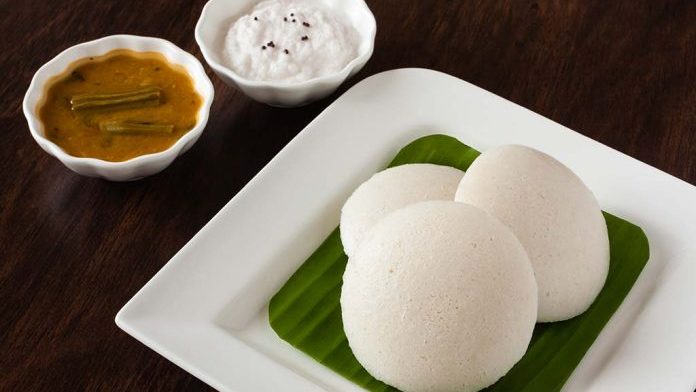
Ingredients:
For the Idli Batter:
- 1 cup urad dal (split black gram)
- 2 cups idli rice (parboiled rice)
- 1/2 teaspoon fenugreek seeds (optional)
- Water for soaking and grinding
- Salt to taste
For Steaming Idlis:
- Idli molds or plates
- Oil or ghee (for greasing)
Instructions:
Preparing the Idli Batter:
- Soaking:
- Rinse the urad dal and idli rice separately under running water until the water runs clear.
- Soak them in enough water separately. If using fenugreek seeds, add them to the urad dal while soaking.
- Let them soak for at least 4-6 hours, or preferably overnight.
- Grinding:
- Drain the soaked urad dal and grind it in a wet grinder or a high-powered blender. Add small amounts of water as needed to make a smooth, fluffy batter. It should take around 20-25 minutes of grinding.
- Similarly, grind the soaked rice into a slightly coarse paste. The texture should be like fine semolina or cream of wheat.
- Mix the urad dal batter and rice batter together in a large bowl. Add salt and mix well.
- The batter should be thick yet pourable. If it’s too thick, add a little water and mix. Avoid making it too runny.
- Fermentation:
- Cover the bowl with a clean cloth and let it ferment in a warm place for about 8-10 hours or overnight. The batter should double in volume and become slightly airy.
Steaming the Idlis:
- Preparation:
- Grease the idli molds or plates with a little oil or ghee to prevent sticking.
- Steaming:
- Fill a large steamer or a large pot with water, ensuring the water level is below the idli molds.
- Bring the water to a gentle boil.
- Pour ladlefuls of batter into each mold, filling them about 3/4 full. Do not overfill, as the idlis need space to expand.
- Place the idli molds in the steamer or pot, cover with a lid, and steam for about 10-12 minutes on medium heat.
- Check the idlis by inserting a toothpick or knife into the center. If it comes out clean, the idlis are ready.
- Cooling and Serving:
- Allow the idlis to cool for a few minutes. Then, use a spoon or a flat spatula to gently remove them from the molds.
- Serve the idlis hot with chutney, sambar, or any accompaniment of your choice.
Enjoy your freshly steamed idlis! They’re best when served hot and soft.
Dosa Recipe
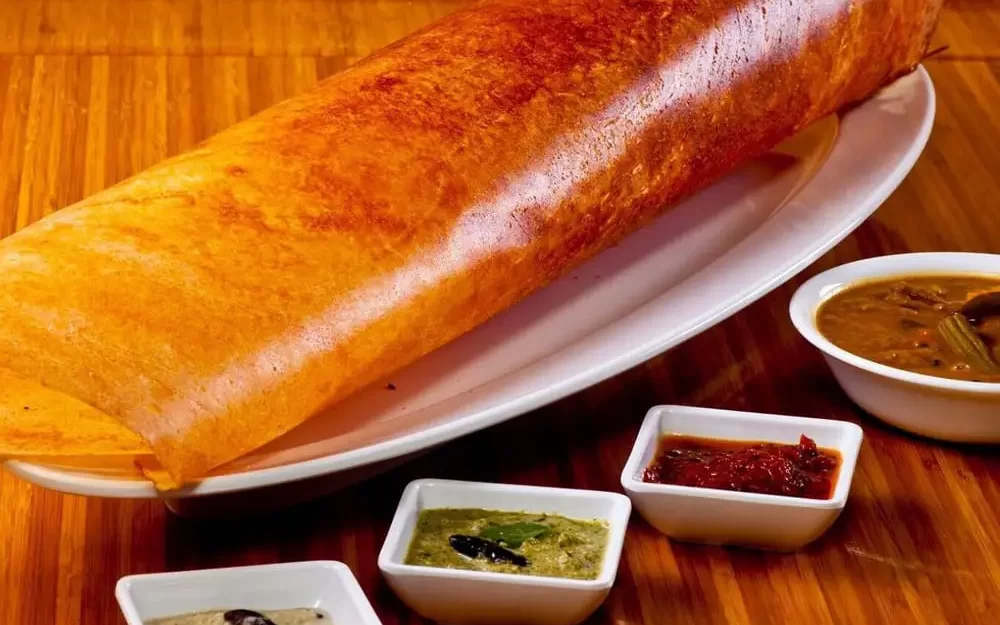
Ingredients:
For the Dosa Batter:
- 1 cup urad dal (split black gram)
- 2.5 cups idli rice (parboiled rice)
- 1/2 cup poha (flattened rice)
- 1/2 teaspoon fenugreek seeds (optional)
- Water for soaking and grinding
- Salt to taste
For Making Dosas:
- Dosa batter
- Oil or ghee (for greasing)
Instructions:
Preparing the Dosa Batter:
- Soaking:
- Rinse the urad dal, idli rice, and poha separately under running water until the water runs clear.
- Soak them in enough water separately. If using fenugreek seeds, add them to the urad dal while soaking.
- Let them soak for at least 4-6 hours, or preferably overnight.
- Grinding:
- Drain the soaked urad dal and grind it in a wet grinder or a high-powered blender. Add small amounts of water as needed to make a smooth, fluffy batter. It should take around 20-25 minutes of grinding.
- Similarly, grind the soaked rice and poha into a slightly coarse paste. The texture should be like fine semolina or cream of wheat.
- Mix the urad dal batter and rice-poha batter together in a large bowl. Add salt and mix well.
- The batter should be thick yet pourable. If it’s too thick, add a little water and mix. Avoid making it too runny.
- Fermentation:
- Cover the bowl with a clean cloth and let it ferment in a warm place for about 8-10 hours or overnight. The batter should double in volume and become slightly airy.
Making Dosas:
- Preparation:
- Heat a non-stick or well-seasoned cast-iron skillet or griddle on medium-high heat.
- Greasing:
- Once the skillet is hot, lightly grease it with a little oil using a brush or a cloth.
- Pouring the Batter:
- Take a ladleful of the dosa batter and pour it in the center of the skillet.
- Using the back of the ladle, gently spread the batter in a circular motion to form a thin, even layer. You can make the dosa as thin or thick as you prefer.
- Cooking:
- Drizzle a little oil or ghee around the edges of the dosa and on top.
- Cook on medium heat until the dosa turns golden brown and starts to crisp up at the edges. This should take about 2-3 minutes.
- You can cover the dosa with a lid for a minute or so to help it cook through.
- Folding and Serving:
- Once the dosa is cooked, gently fold it in half or roll it up.
- Serve hot with your favorite chutney, sambar, or a potato filling (masala dosa).
Enjoy your delicious homemade dosas! They are best when served immediately.
Rava Upma Recipe
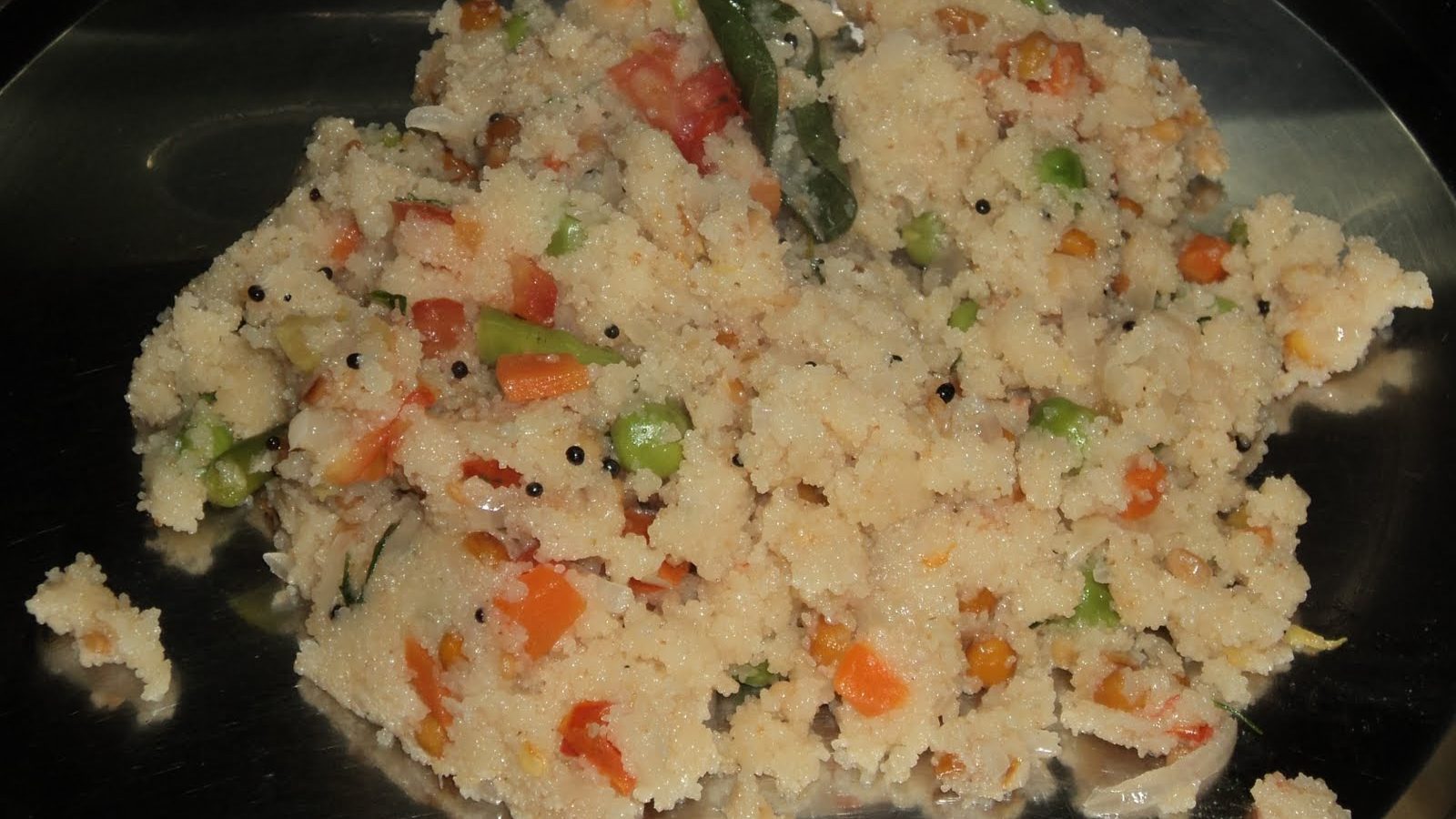
Ingredients:
- 1 cup fine semolina (rava/sooji)
- 2 tablespoons oil or ghee
- 1 teaspoon mustard seeds
- 1 teaspoon urad dal (split black gram)
- 1 teaspoon chana dal (split chickpeas)
- 1/2 teaspoon cumin seeds
- A pinch of asafoetida (hing)
- 1 green chili, finely chopped (adjust to taste)
- 1 small onion, finely chopped
- 1/4 cup mixed vegetables (carrots, peas, bell peppers, etc.), finely chopped
- 1/4 teaspoon turmeric powder
- Salt to taste
- 2.5 cups water
- 2 tablespoons fresh coriander leaves, chopped (optional)
- Lemon juice (optional, for garnish)
Instructions:
- Roasting Semolina:
- Heat a dry skillet or pan on medium heat. Add the semolina and roast it for about 3-4 minutes, stirring constantly until it turns golden brown and you can smell a nutty aroma. Be careful not to burn it. Transfer the roasted semolina to a plate and set aside.
- Preparing Tempering:
- In the same pan, add oil or ghee. Once hot, add mustard seeds and let them splutter.
- Add urad dal, chana dal, and cumin seeds. Sauté until they turn golden brown.
- Add a pinch of asafoetida and finely chopped green chili. Sauté for a minute.
- Adding Vegetables:
- Add chopped onions and sauté until they turn translucent.
- Add the mixed vegetables, turmeric powder, and a pinch of salt. Cook for a few minutes until the vegetables are slightly tender.
- Cooking Semolina:
- Pour in the measured water and bring it to a gentle boil.
- Gradually add the roasted semolina, stirring continuously to avoid lumps.
- Reduce the heat to low and cover the pan. Let it cook for about 3-4 minutes, or until the semolina absorbs the water and is cooked through.
- If the upma is too thick, you can add a little hot water and stir.
- Finishing Touch:
- Check the seasoning and adjust salt if needed. If you prefer, squeeze some lemon juice over the upma for a tangy flavor.
- Garnish with chopped coriander leaves (if using).
- Serving:
- Serve hot in bowls with a side of chutney, pickle, or yogurt.
Enjoy your delicious and nutritious Rava Upma!
Poha Recipe
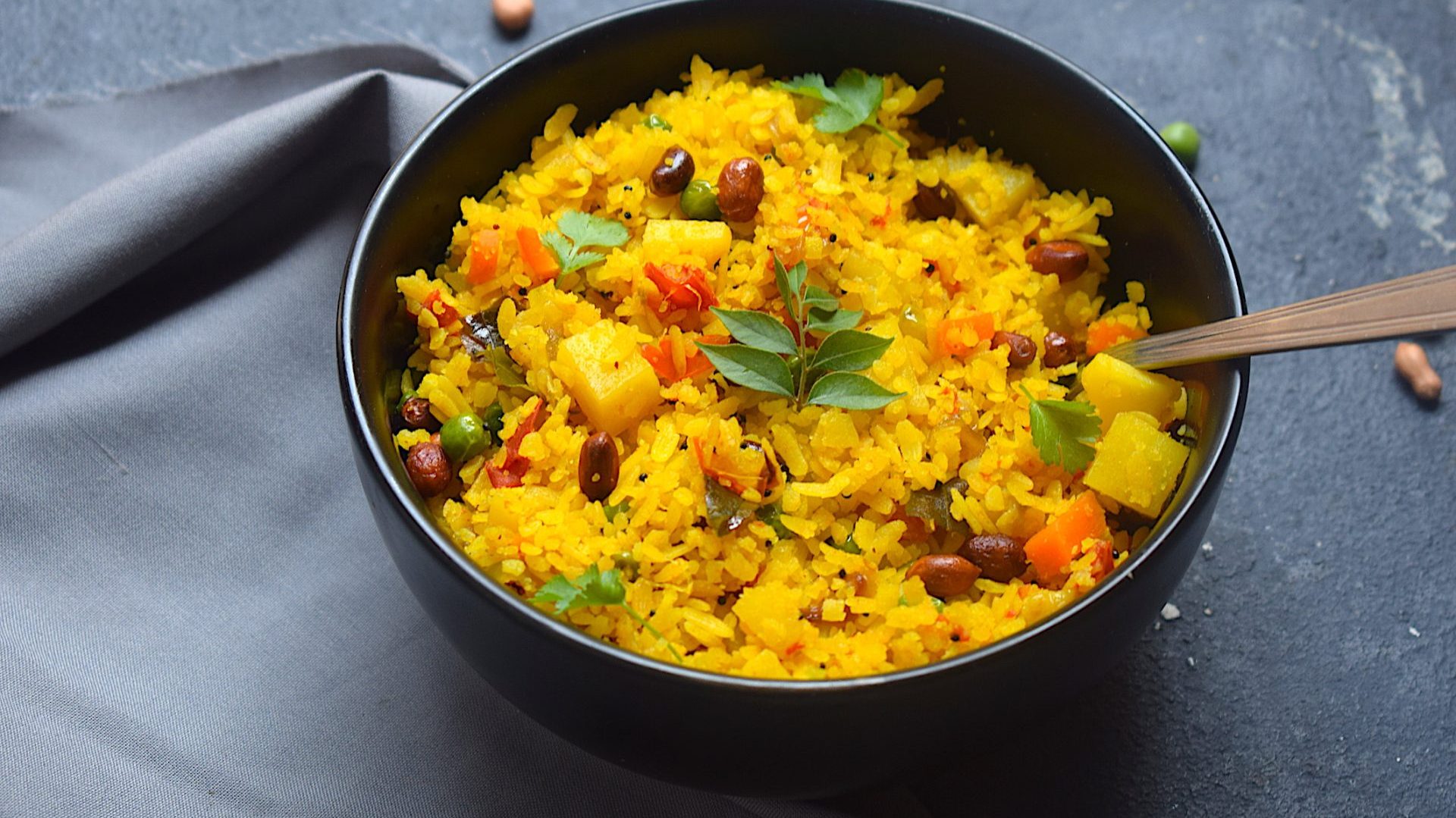
Ingredients:
- 1 cup thick or medium poha (flattened rice)
- 2 tablespoons oil
- 1 teaspoon mustard seeds
- 1 teaspoon cumin seeds
- A pinch of asafoetida (hing)
- 1 green chili, finely chopped (adjust to taste)
- 1 small onion, finely chopped
- 1/2 teaspoon turmeric powder
- 1 large potato, peeled and diced
- 1/4 cup green peas (optional)
- Salt to taste
- Juice of 1 lemon
- Fresh coriander leaves for garnish (optional)
- Sev (thin crispy noodles) for garnish (optional)
Instructions:
- Rinsing Poha:
- Place the poha in a sieve or colander and rinse it under running water for about 15-20 seconds. Gently fluff it with your fingers while rinsing. Be careful not to break the poha.
- Allow it to drain completely and set aside.
- Prepping Ingredients:
- Heat oil in a large pan or skillet on medium heat.
- Add mustard seeds and let them splutter. Then, add cumin seeds and sauté for a few seconds until they sizzle.
- Add a pinch of asafoetida and finely chopped green chili. Sauté for a minute.
- Add chopped onions and cook until they turn translucent.
- Add turmeric powder and mix well.
- Cooking Potatoes and Peas:
- Add diced potatoes and peas (if using) to the pan. Season with a little salt.
- Cover and cook on low to medium heat until the potatoes are cooked through. You can sprinkle a little water if needed to prevent sticking.
- Adding Poha:
- Once the potatoes are cooked, add the drained poha to the pan. Gently toss and mix everything together.
- Cook for another 2-3 minutes, stirring gently, until the poha is heated through.
- Seasoning and Garnish:
- Squeeze lemon juice over the poha and mix well. Adjust salt and lemon juice to taste.
- Garnish with fresh coriander leaves (if using) and sev for extra crunch and flavor.
- Serving:
- Serve hot, garnished with additional sev and coriander leaves if desired. Poha can be enjoyed on its own or with a side of chutney, yogurt, or pickle.
Enjoy your delicious and comforting bowl of poha! It’s a wonderful breakfast option!
Semiya Upma Recipe
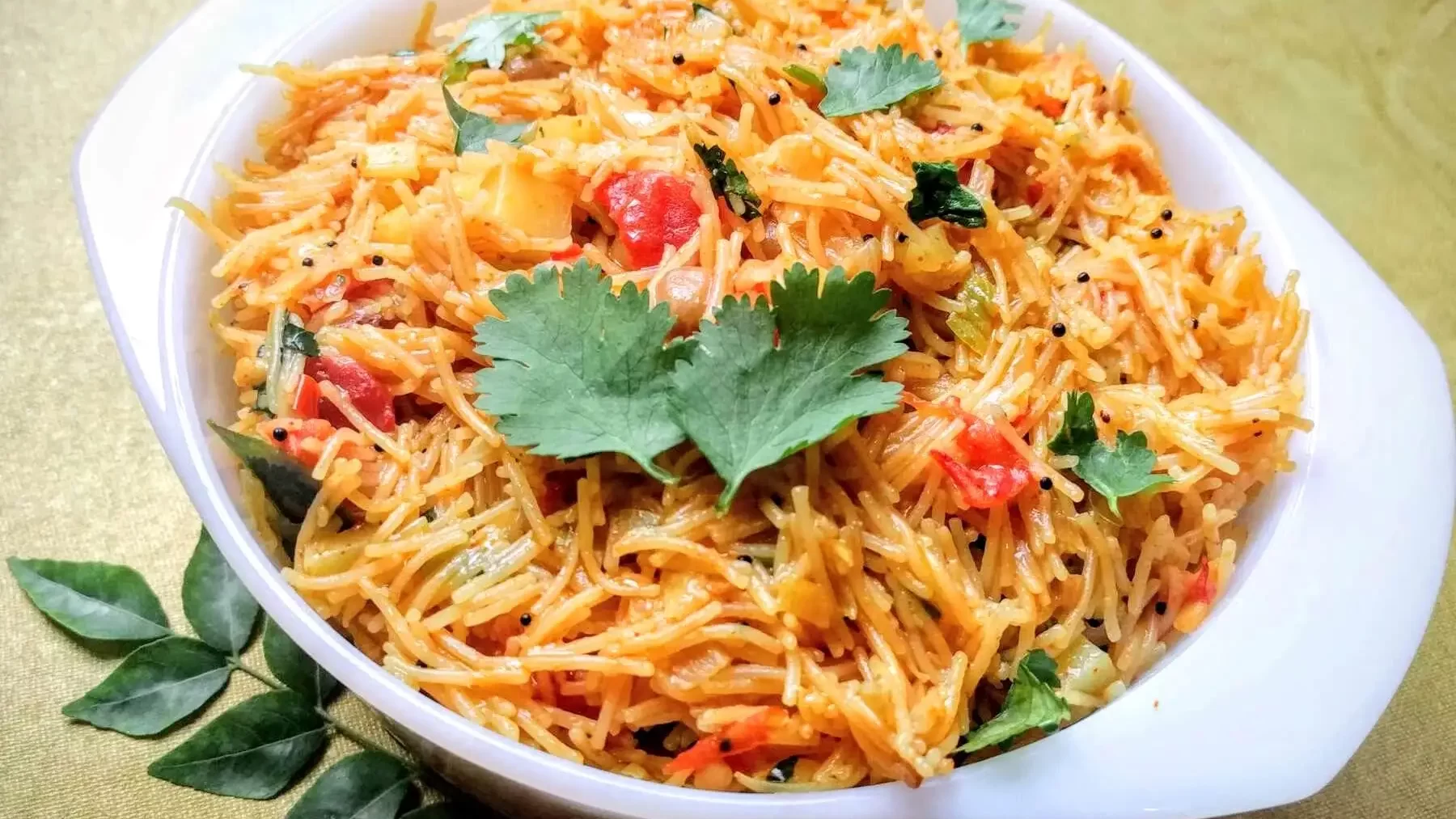
Ingredients:
- 1 cup thin vermicelli (semiya)
- 2 tablespoons oil or ghee
- 1 teaspoon mustard seeds
- 1 teaspoon urad dal (split black gram)
- 1 teaspoon chana dal (split chickpeas)
- A pinch of asafoetida (hing)
- 1 green chili, finely chopped (adjust to taste)
- 1 small onion, finely chopped
- 1/4 cup mixed vegetables (carrots, peas, beans, etc.), finely chopped
- 1/4 teaspoon turmeric powder
- Salt to taste
- 2.5 cups water
- 2 tablespoons fresh coriander leaves, chopped (optional)
- Lemon juice (optional, for garnish)
Instructions:
- Roasting Vermicelli:
- Heat a dry skillet or pan on medium heat. Add the vermicelli and roast it for about 2-3 minutes, stirring constantly until it turns golden brown. Be careful not to burn it. Transfer the roasted vermicelli to a plate and set aside.
- Preparing Tempering:
- In the same pan, add oil or ghee. Once hot, add mustard seeds and let them splutter.
- Add urad dal, chana dal, and a pinch of asafoetida. Sauté until they turn golden brown.
- Add finely chopped green chili and sauté for a minute.
- Adding Vegetables:
- Add chopped onions and sauté until they turn translucent.
- Add the mixed vegetables, turmeric powder, and a pinch of salt. Cook for a few minutes until the vegetables are slightly tender.
- Cooking Vermicelli:
- Pour in the measured water and bring it to a gentle boil.
- Gradually add the roasted vermicelli, stirring continuously to avoid lumps.
- Reduce the heat to low and cover the pan. Let it cook for about 3-4 minutes, or until the vermicelli absorbs the water and is cooked through.
- If the upma is too thick, you can add a little hot water and stir.
- Finishing Touch:
- Check the seasoning and adjust salt if needed. If you prefer, squeeze some lemon juice over the upma for a tangy flavor.
- Garnish with chopped coriander leaves (if using).
- Serving:
- Serve hot in bowls with a side of chutney, pickle, or yogurt.
Enjoy your delicious and quick Semiya Upma! It makes for a perfect breakfast or a light meal.
Rava Idli Recipe
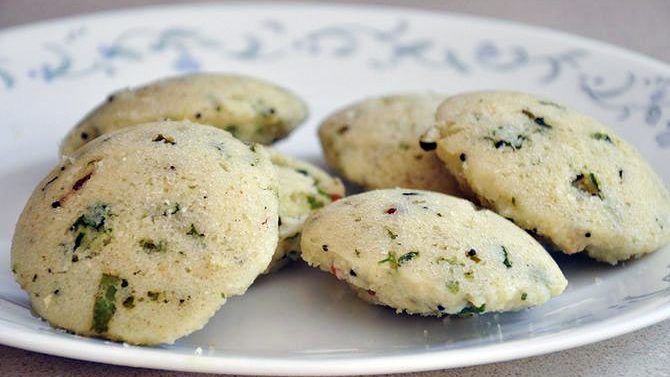
Ingredients:
For the Rava Idli Batter:
- 1 cup fine semolina (rava/sooji)
- 1 cup plain yogurt (curd)
- 1/2 cup water
- 1/2 teaspoon mustard seeds
- 1/2 teaspoon cumin seeds
- 1/2 teaspoon urad dal (split black gram)
- 1/2 teaspoon chana dal (split chickpeas)
- A pinch of asafoetida (hing)
- 1 tablespoon oil
- 1/2 teaspoon baking soda (optional)
- Salt to taste
For Garnish (Optional):
- Chopped coriander leaves
- Grated coconut
- Cashews
Instructions:
- Prepping Ingredients:
- Heat a small pan on medium heat. Add oil and once it’s hot, add mustard seeds. Allow them to splutter.
- Add cumin seeds, urad dal, and chana dal. Sauté until they turn golden brown.
- Add a pinch of asafoetida and stir for a few seconds. Then, remove this mixture from the heat and set it aside.
- Roasting Semolina:
- In the same pan, add the fine semolina (rava). Roast it on low to medium heat for about 2-3 minutes until it turns aromatic and light golden in color. Be careful not to burn it. Transfer the roasted semolina to a large mixing bowl.
- Mixing Batter:
- Add the yogurt, water, and the previously prepared tempering mixture to the roasted semolina. Mix well to form a smooth batter.
- If using, add baking soda and mix thoroughly. This will make the idlis fluffy.
- Add salt to taste and mix again.
- Resting the Batter:
- Allow the batter to rest for about 15-20 minutes. This allows the semolina to absorb the moisture and the batter to thicken.
- Preparing Idli Steamer:
- While the batter is resting, prepare the idli steamer. Add water to the steamer and bring it to a gentle boil.
- Grease the idli molds with a little oil to prevent sticking.
- Filling the Molds:
- Just before steaming, give the batter a gentle stir. If it has thickened too much, you can add a little more water to adjust the consistency.
- Pour the batter into the greased idli molds, filling them about 3/4 full.
- Steaming Idlis:
- Place the idli molds in the steamer, cover with a lid, and steam for about 10-12 minutes on medium heat.
- Check the idlis by inserting a toothpick or knife into the center. If it comes out clean, the idlis are ready.
- Cooling and Serving:
- Allow the idlis to cool for a few minutes. Then, use a spoon or a flat spatula to gently remove them from the molds.
- Serve the idlis hot with chutney, sambar, or any accompaniment of your choice.
Enjoy your quick and delicious Rava Idlis! They’re best when served hot and soft.
Pesarattu Recipe
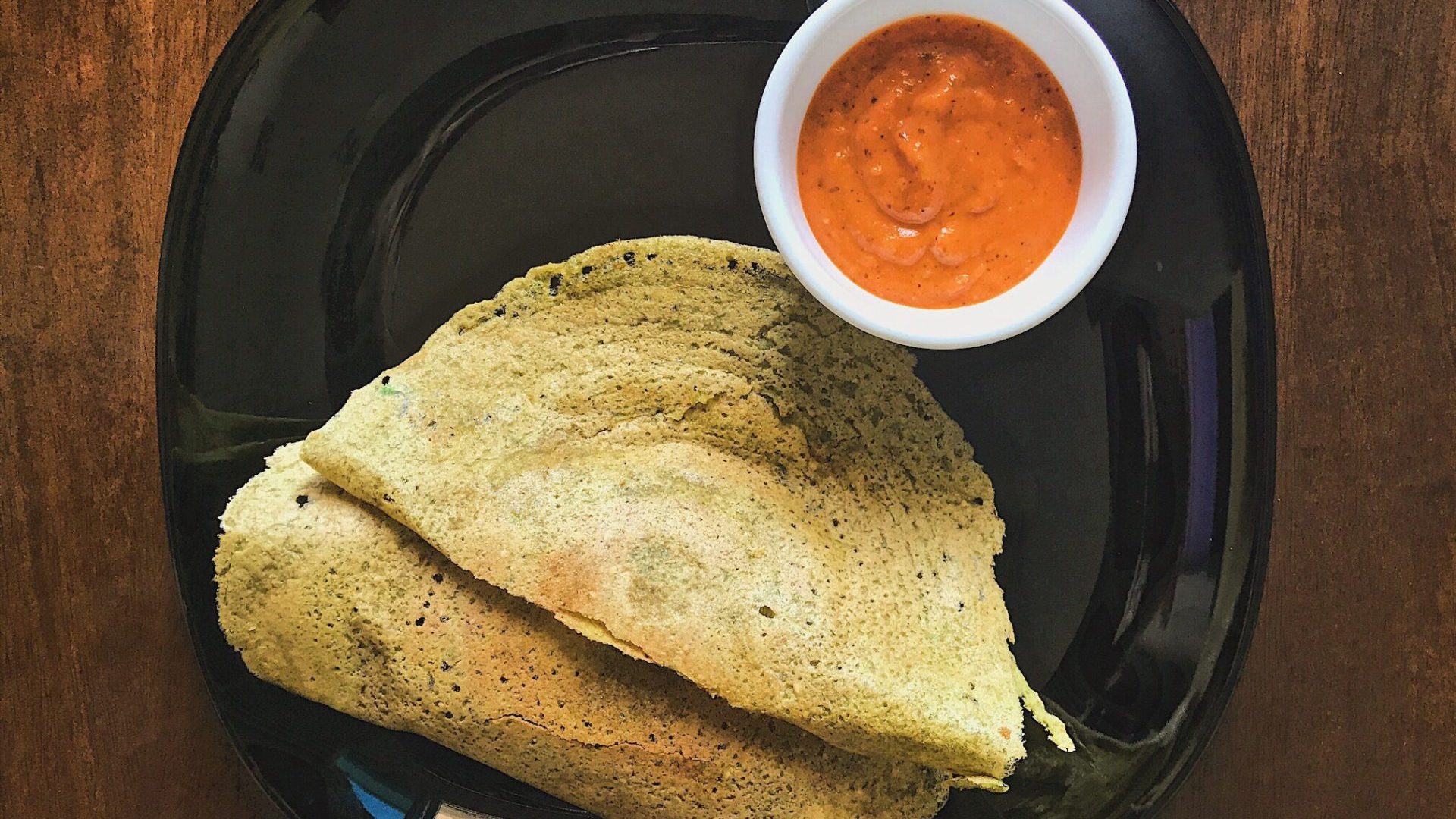
Ingredients:
- 1 cup whole green gram (moong dal)
- 2 tablespoons rice (optional, for crispiness)
- 2-3 green chilies (adjust to taste)
- 1 inch piece of ginger
- A handful of fresh coriander leaves
- 1 small onion (optional)
- Salt to taste
- Water for grinding
- Oil or ghee for cooking
Instructions:
- Prepping the Lentils:
- Wash and soak the whole green gram in enough water for about 4-6 hours. If using rice, soak it along with the green gram.
- Draining and Grinding:
- After soaking, drain the water from the green gram and rice (if using).
- Add them to a blender along with green chilies, ginger, and a handful of fresh coriander leaves. Blend into a smooth batter. Add water gradually to achieve the desired consistency. The batter should be slightly thick but pourable.
- If you’re adding onion, finely chop it and mix it into the batter.
- Seasoning and Salt:
- Add salt to the batter and mix well.
- Making Pesarattu:
- Heat a non-stick or well-seasoned cast-iron skillet or griddle on medium-high heat.
- Grease it with a little oil or ghee.
- Pour a ladleful of the batter onto the center of the skillet.
- Using the back of the ladle, gently spread the batter in a circular motion to form a thin, even pancake.
- Cooking:
- Drizzle a little oil or ghee around the edges of the pesarattu and on top.
- Cook on medium heat until the edges start to turn golden brown and the bottom is crispy. This should take about 2-3 minutes.
- Flip the pesarattu and cook the other side for another 1-2 minutes.
- Serving:
- Fold the pesarattu in half or roll it up.
- Serve hot with your favorite chutney, sambar, or a spicy potato filling.
Enjoy your nutritious and tasty Pesarattu! It’s best when served fresh and hot.
Adai Recipe
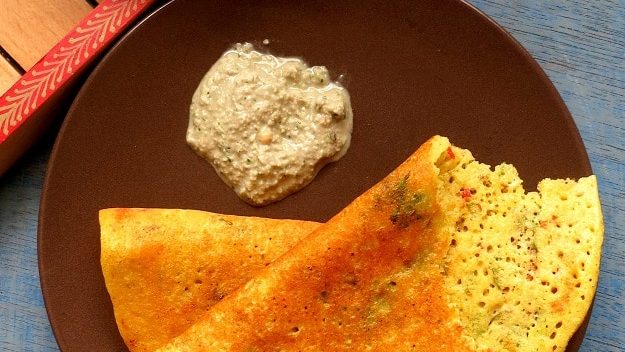
Ingredients:
- 1 cup rice
- 1/4 cup toor dal (pigeon peas)
- 1/4 cup chana dal (split chickpeas)
- 1/4 cup urad dal (split black gram)
- 1/4 cup moong dal (split green gram)
- 2-3 dried red chilies (adjust to taste)
- A small piece of ginger (about 1 inch)
- 2-3 cloves of garlic (optional)
- A handful of fresh curry leaves
- 1 small onion, finely chopped
- 1/4 cup fresh coriander leaves, chopped
- Salt to taste
- Water for grinding
- Oil or ghee for cooking
Instructions:
- Prepping the Lentils and Rice:
- Wash the rice and dals together under running water until the water runs clear.
- Soak them in enough water for about 3-4 hours.
- Draining and Grinding:
- After soaking, drain the water from the rice and lentils.
- Add them to a blender along with dried red chilies, ginger, garlic (if using), and fresh curry leaves. Blend into a coarse batter. Do not add too much water; the batter should be thick and slightly grainy.
- Mixing Batter:
- Transfer the batter to a mixing bowl. Add finely chopped onions, coriander leaves, and salt. Mix well.
- Making Adai:
- Heat a non-stick or well-seasoned cast-iron skillet or griddle on medium-high heat.
- Grease it with a little oil or ghee.
- Take a ladleful of the batter and spread it onto the center of the skillet in a circular motion to form a thick pancake. Adai pancakes are usually thicker than dosas.
- Cooking:
- Drizzle a little oil or ghee around the edges of the adai and on top.
- Cook on medium heat until the bottom turns golden brown and crisp. This should take about 3-4 minutes.
- Flip the adai and cook the other side for another 3-4 minutes.
- Serving:
- Serve hot with chutney, sambar, or avial.
Enjoy your nutritious and flavorful Adai!
Rava Dosa Recipe
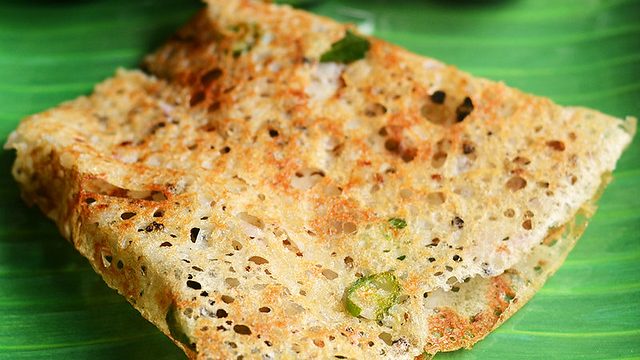
Ingredients:
- 1 cup fine semolina (rava/sooji)
- 1/4 cup rice flour
- 1/4 cup all-purpose flour (maida)
- 1/2 teaspoon cumin seeds
- 1/2 teaspoon mustard seeds
- 1/2 teaspoon black peppercorns, crushed
- A pinch of asafoetida (hing)
- 1 green chili, finely chopped (adjust to taste)
- 1 small onion, finely chopped
- 2 tablespoons fresh coriander leaves, chopped
- 1 tablespoon grated ginger
- 1/4 cup plain yogurt (curd)
- 2.5 cups water
- Salt to taste
- Oil or ghee for cooking
Instructions:
- Prepping the Batter:
- In a large mixing bowl, combine semolina, rice flour, all-purpose flour, cumin seeds, mustard seeds, crushed black peppercorns, asafoetida, chopped green chili, chopped onion, coriander leaves, and grated ginger.
- Add yogurt and mix well.
- Gradually add water, stirring continuously, to form a smooth, runny batter. The batter should be thin and pourable.
- Let the batter rest for about 15-20 minutes. This allows the semolina to absorb the moisture.
- Preparing the Skillet:
- Heat a non-stick or well-seasoned cast-iron skillet or griddle on medium-high heat.
- Grease it with a little oil or ghee.
- Making Rava Dosa:
- Pour a ladleful of the batter onto the center of the skillet.
- Using the back of the ladle, gently spread the batter in a circular motion to form a thin, lacy crepe.
- Drizzle a little oil or ghee around the edges of the dosa and on top.
- Cooking:
- Cook on medium heat until the edges start to turn golden brown and crisp. This should take about 2-3 minutes.
- Flip the dosa and cook the other side for another 1-2 minutes.
- Serving:
- Serve hot with your favorite chutney, sambar, or a spicy potato filling.
Enjoy your quick and delicious Rava Dosa! It’s best when served hot and crispy.
Moong Dal Chilla Recipe
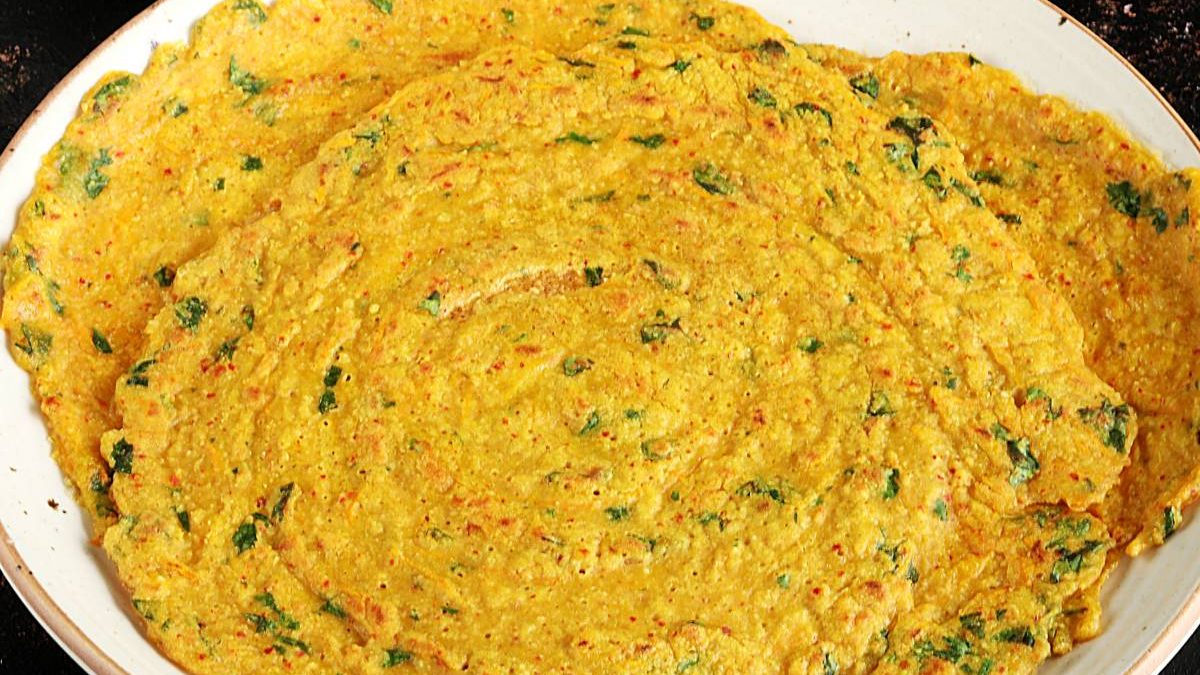
Ingredients:
- 1 cup split green gram (moong dal)
- 1-2 green chilies (adjust to taste)
- 1 inch piece of ginger
- A handful of fresh coriander leaves
- 1 small onion, finely chopped
- 1 small tomato, finely chopped (optional)
- 1/2 teaspoon cumin seeds
- A pinch of asafoetida (hing)
- Salt to taste
- Water for grinding
- Oil or ghee for cooking
Instructions:
- Prepping the Lentils:
- Wash and soak the split green gram in enough water for about 2-4 hours.
- Draining and Grinding:
- After soaking, drain the water from the moong dal.
- Add the soaked moong dal to a blender along with green chilies, ginger, and fresh coriander leaves. Blend into a smooth batter. Add water gradually to achieve the desired consistency. The batter should be thick yet pourable.
- Seasoning and Salt:
- Transfer the batter to a mixing bowl. Add cumin seeds, finely chopped onions, tomatoes (if using), and a pinch of asafoetida. Mix well.
- Add salt to taste and mix again.
- Making Chillas:
- Heat a non-stick or well-seasoned cast-iron skillet or griddle on medium-high heat.
- Grease it with a little oil or ghee.
- Pour a ladleful of the batter onto the center of the skillet.
- Using the back of the ladle, gently spread the batter in a circular motion to form a thin, even pancake.
- Cooking:
- Drizzle a little oil or ghee around the edges of the chilla and on top.
- Cook on medium heat until the bottom turns golden brown and crisp. This should take about 3-4 minutes.
- Flip the chilla and cook the other side for another 2-3 minutes.
- Serving:
- Serve hot with your favorite chutney, yogurt, or pickle.
Enjoy your nutritious and tasty Moong Dal Chillas!
Bread Upma Recipe
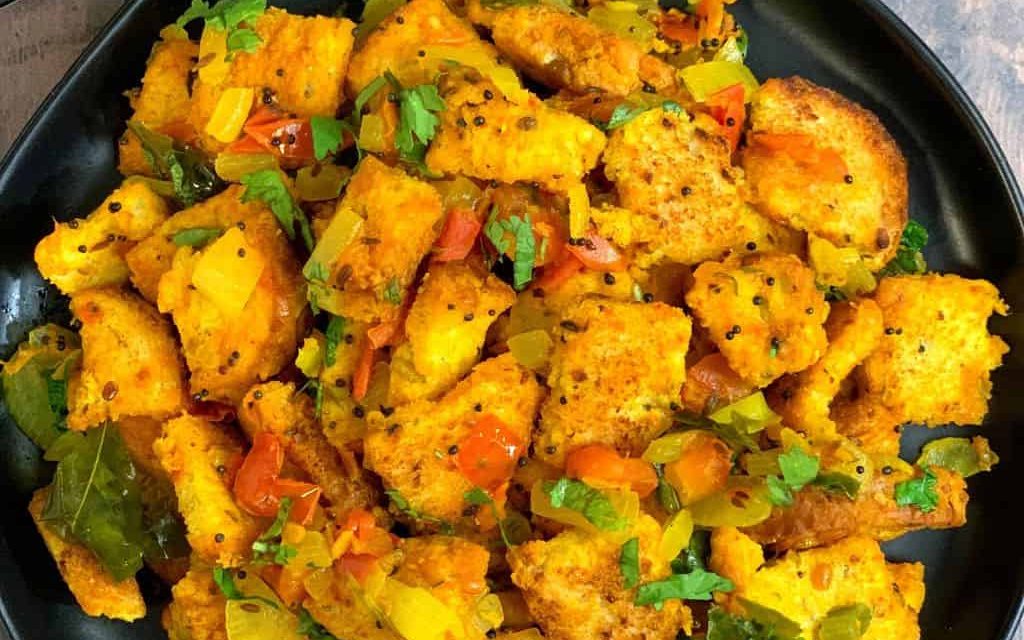
Ingredients:
- 4 slices of bread (white or whole wheat), cut into bite-sized pieces
- 1 onion, finely chopped
- 1 tomato, finely chopped
- 2-3 green chilies, finely chopped
- 1/2 inch ginger, finely chopped
- 1/2 cup peas (fresh or frozen)
- 1/4 cup chopped carrots
- 1/4 cup chopped bell peppers (optional)
- 1/2 teaspoon mustard seeds
- 1/2 teaspoon cumin seeds
- A pinch of asafoetida (hing)
- 1/2 teaspoon turmeric powder
- 1 teaspoon red chili powder (adjust to taste)
- Salt to taste
- A handful of curry leaves
- 2 tablespoons cooking oil
- Fresh coriander leaves for garnish
- Lemon wedges (optional)
Instructions:
- Preparation:
- Cut the bread into bite-sized pieces.
- Finely chop onions, tomatoes, green chilies, and ginger.
- If using fresh peas, shell them. If using frozen peas, thaw them.
- Chop carrots and bell peppers into small pieces.
- Tempering:
- Heat oil in a pan on medium heat. Add mustard seeds and let them splutter.
- Add cumin seeds and asafoetida (hing). Stir well.
- Saute Aromatics:
- Add chopped onions, green chilies, and ginger. Sauté until onions become translucent.
- Add Vegetables:
- Add chopped tomatoes, peas, carrots, and bell peppers. Cook until the vegetables are slightly tender.
- Spices:
- Add turmeric powder, red chili powder, and salt. Mix well.
- Bread Pieces:
- Add the bread pieces to the pan. Toss everything together until the bread is well-coated with the masala.
- Garnish:
- Sprinkle fresh curry leaves and chopped coriander leaves over the upma. Mix well.
- Serve:
- Bread upma is ready to be served. Garnish with additional coriander leaves and lemon wedges if desired.
Enjoy your South Indian-style Bread Upma! It makes for a quick and tasty breakfast or snack.
WEEKEND BITES
Masala Dosa Recipe
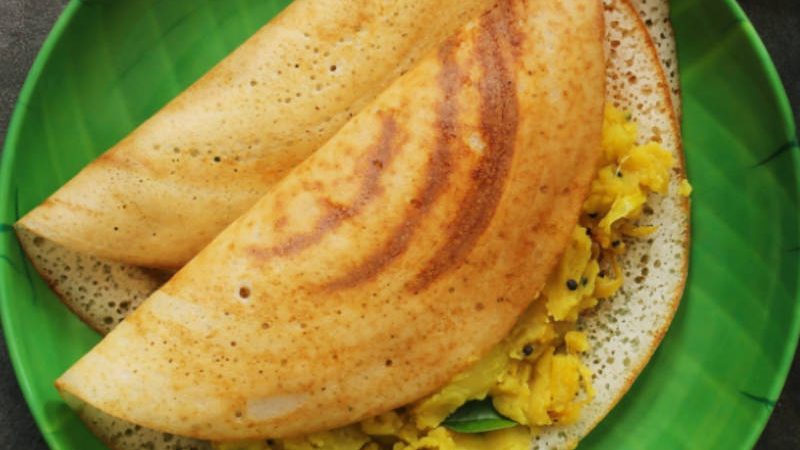
Instructions:
Preparing the Dosa Batter:
- Soaking:
- Rinse the rice and urad dal separately under running water. Add fenugreek seeds to the urad dal while rinsing.
- Soak the rice, urad dal, and fenugreek seeds in enough water separately. Allow them to soak for about 4-6 hours, or preferably overnight.
- Grinding:
- Drain the soaked urad dal and grind it in a wet grinder or a high-powered blender. Add small amounts of water as needed to make a smooth, fluffy batter. It should take around 20-25 minutes of grinding.
- Similarly, grind the soaked rice into a slightly coarse paste. The texture should be like fine semolina or cream of wheat.
- Mix the urad dal batter and rice batter together in a large bowl. Add salt and mix well.
- The batter should be thick yet pourable. If it’s too thick, add a little water and mix. Avoid making it too runny.
- Fermentation:
- Cover the bowl with a clean cloth and let it ferment in a warm place for about 8-10 hours or overnight. The batter should double in volume and become slightly airy.
Preparing the Potato Filling (Masala):
- Boiling and Mashing Potatoes:
- Boil the potatoes until they are cooked through. Peel and mash them coarsely.
- Making the Masala:
- Heat oil in a pan. Add mustard seeds and let them splutter.
- Add cumin seeds, urad dal, and chana dal. Sauté until they turn golden brown.
- Add a pinch of asafoetida, chopped green chili, and grated ginger. Sauté for a minute.
- Add chopped onions and cook until they turn translucent.
- Add turmeric powder, garam masala, and salt. Mix well.
- Add the mashed potatoes and toss everything together until well combined. Cook for a few minutes, stirring occasionally.
- Garnish with fresh coriander leaves. Set aside.
Making Masala Dosas:
- Preparation:
- Heat a non-stick or well-seasoned cast-iron skillet or griddle on medium-high heat.
- Grease it with a little oil or ghee.
- Pouring the Batter:
- Take a ladleful of the dosa batter and pour it in the center of the skillet.
- Using the back of the ladle, gently spread the batter in a circular motion to form a thin, even layer. You can make the dosa as thin or thick as you prefer.
- Cooking:
- Drizzle a little oil or ghee around the edges of the dosa and on top.
- Cook on medium heat until the dosa turns golden brown and starts to crisp up at the edges. This should take about 2-3 minutes.
- You can cover the dosa with a lid for a minute or so to help it cook through.
- Filling and Serving:
- Place a portion of the prepared potato filling in the center of the dosa.
- Fold the dosa over the filling or roll it up.
- Serve hot with coconut chutney, sambar, and a drizzle of ghee.
Enjoy your delicious and satisfying Masala Dosa!
Poori Recipe
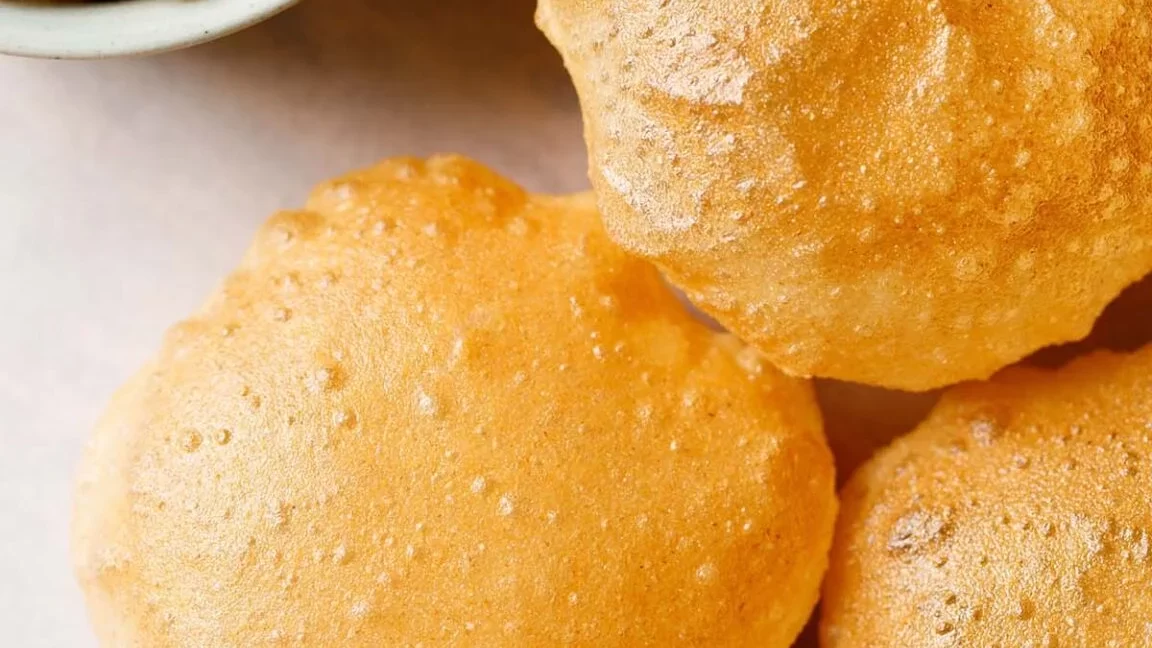
Ingredients:
- 2 cups whole wheat flour
- 1/2 teaspoon salt
- Water (for kneading)
- Oil (for deep frying)
Instructions:
- Preparing the Dough:
- In a large mixing bowl, combine the whole wheat flour and salt.
- Gradually add water and knead the mixture to form a smooth and firm dough. The dough should be slightly stiff.
- Cover the dough with a clean cloth and let it rest for about 15-20 minutes. This allows the gluten to relax and makes rolling easier.
- Dividing and Shaping:
- After resting, divide the dough into small lemon-sized balls. Roll them between your palms to make them smooth.
- Roll each ball into a flat disc, about 4-5 inches in diameter. You can use a rolling pin and a little flour to prevent sticking.
- Heating the Oil:
- Heat oil in a deep frying pan or kadai on medium-high heat. The oil should be hot, but not smoking. To check if it’s ready, drop a small piece of dough into the oil. It should sizzle and rise to the surface.
- Frying the Pooris:
- Gently slide one rolled poori into the hot oil. Press it down with the back of a slotted spoon as it fries to help it puff up.
- Once it puffs up, carefully flip it using a slotted spoon and fry until it turns golden brown on both sides. This should take about 30 seconds to a minute for each poori.
- Remove the poori from the oil using a slotted spoon and let excess oil drain on a paper towel.
- Repeat the Process:
- Continue this process for the remaining rolled pooris.
- Serving:
- Serve hot with your favorite side dish, such as potato curry, chana masala, or any other curry of your choice.
Enjoy your delicious and puffed up pooris!
Here are some recipes of the most famous south Indian chutneys!
Tomato Chutney Recipe

Ingredients:
- 3 large tomatoes, chopped
- 1 small onion, chopped
- 2-3 green chilies (adjust to taste)
- 2 cloves of garlic (optional)
- 1-inch piece of ginger
- 1/2 teaspoon mustard seeds
- 1/2 teaspoon urad dal (split black gram)
- 1/2 teaspoon chana dal (split chickpeas)
- A pinch of asafoetida (hing)
- 1/2 teaspoon turmeric powder
- 1/2 teaspoon red chili powder (adjust to taste)
- 1 tablespoon oil
- Salt to taste
- Fresh coriander leaves, chopped (for garnish, optional)
Instructions:
- Prepping the Ingredients:
- In a blender, combine the chopped tomatoes, onion, green chilies, garlic (if using), and ginger. Blend until you get a smooth paste. Set aside.
- Tempering:
- Heat oil in a pan on medium heat. Add mustard seeds and let them splutter.
- Add urad dal, chana dal, and a pinch of asafoetida. Sauté until they turn golden brown.
- Adding Tomato Mixture:
- Pour the tomato mixture into the pan. Add turmeric powder, red chili powder, and salt. Mix well.
- Cook on medium heat, stirring occasionally, until the chutney thickens and the raw smell disappears. This should take about 10-15 minutes.
- Adjusting Consistency:
- If the chutney is too thick, you can add a little water to achieve the desired consistency.
- Finishing Touch:
- Once the chutney is cooked to your liking, remove it from the heat.
- Garnish with chopped fresh coriander leaves if desired.
- Serving:
- Serve the tomato chutney as a condiment alongside dosas, idlis, or any South Indian snack of your choice.
Enjoy your tangy and delicious Tomato Chutney! It adds a burst of flavor to your meal.
Coconut Chutney Recipe
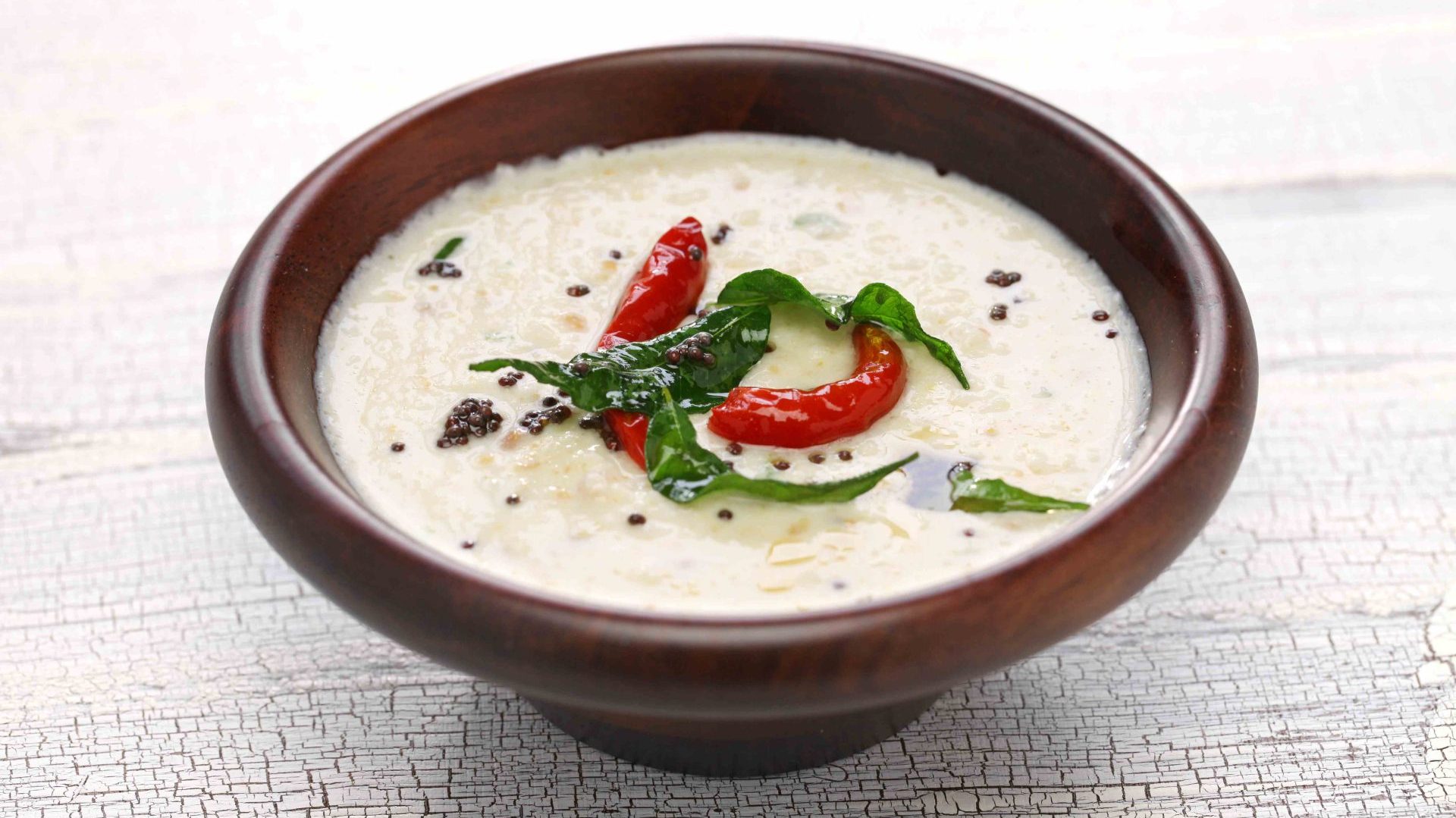
Ingredients:
- 1 cup grated fresh coconut
- 2-3 green chilies (adjust to taste)
- 1/2 inch piece of ginger
- 1 small onion (optional)
- 2 tablespoons roasted chana dal (split chickpeas)
- 1 tablespoon oil
- 1/2 teaspoon mustard seeds
- 1/2 teaspoon urad dal (split black gram)
- A pinch of asafoetida (hing)
- A few curry leaves
- Salt to taste
- Water (as needed for blending)
- Fresh coriander leaves (optional, for garnish)
Instructions:
- Blending the Chutney:
- In a blender, combine the grated coconut, green chilies, ginger, onion (if using), and roasted chana dal.
- Add a little water and blend until you get a smooth paste. The consistency should be like a thick sauce.
- Tempering:
- Heat oil in a small pan on medium heat. Add mustard seeds and let them splutter.
- Add urad dal, a pinch of asafoetida, and curry leaves. Sauté until the dal turns golden brown.
- Mixing with Chutney:
- Pour the tempering mixture over the blended coconut mixture.
- Add salt to taste and mix well. Adjust the consistency by adding a little more water if needed.
- Finishing Touch:
- Garnish with fresh coriander leaves (if using).
- Serving:
- Serve the coconut chutney as a side with dosas, idlis, vadas, or any South Indian dish of your choice.
Enjoy your quick and flavorful Coconut Chutney! It adds a delightful touch to your meal.
Pudina Chutney Recipe
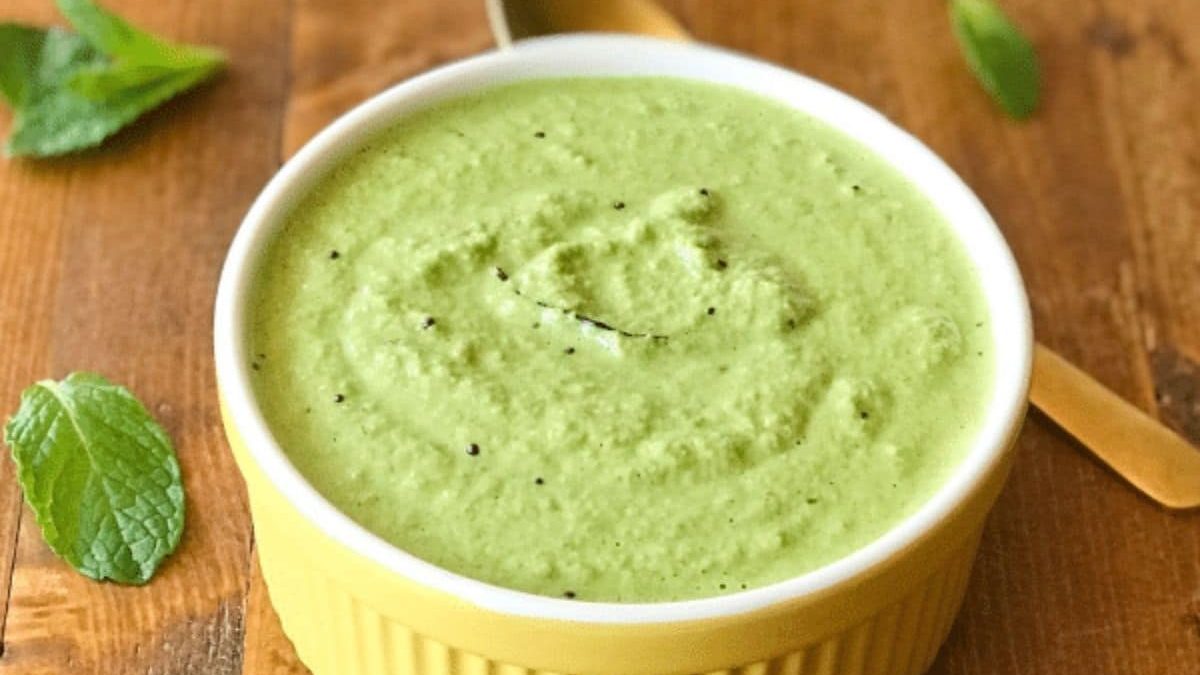
Ingredients:
- 1 cup fresh mint leaves, tightly packed
- 1/2 cup fresh coriander leaves, tightly packed
- 2-3 green chilies (adjust to taste)
- 1/2 inch piece of ginger
- 2 cloves of garlic (optional)
- 1 small onion (optional)
- 2 tablespoons roasted chana dal (split chickpeas)
- 1 tablespoon oil
- 1/2 teaspoon mustard seeds
- 1/2 teaspoon urad dal (split black gram)
- A pinch of asafoetida (hing)
- 1 tablespoon lemon juice (optional)
- Salt to taste
- Water (as needed for blending)
Instructions:
- Blending the Chutney:
- In a blender, combine the fresh mint leaves, coriander leaves, green chilies, ginger, garlic (if using), onion (if using), and roasted chana dal.
- Add a little water and blend until you get a smooth paste. The consistency should be like a thick sauce.
- Tempering:
- Heat oil in a small pan on medium heat. Add mustard seeds and let them splutter.
- Add urad dal, a pinch of asafoetida, and sauté until the dal turns golden brown.
- Mixing with Chutney:
- Pour the tempering mixture over the blended pudina mixture.
- Add salt to taste and mix well. Adjust the consistency by adding a little more water if needed.
- Finishing Touch:
- If you prefer, squeeze lemon juice over the chutney and mix well for a tangy flavor.
- Serving:
- Serve the pudina chutney as a side with dosas, idlis, vadas, or any Indian dish of your choice.
Enjoy your quick and aromatic Pudina Chutney!
Peanut Chutney Recipe
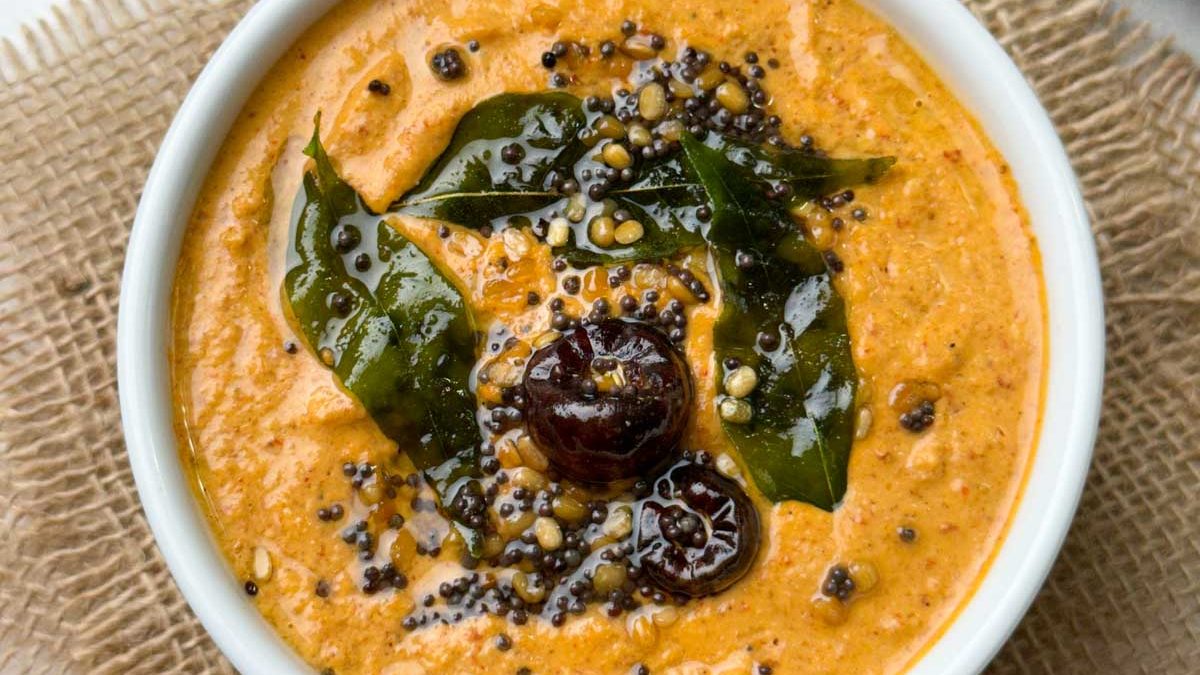
Ingredients:
- 1 cup roasted peanuts (skinless)
- 2-3 green chilies (adjust to taste)
- 1/2 inch piece of ginger
- 2 cloves of garlic (optional)
- 1 small onion (optional)
- 1 tablespoon oil
- 1/2 teaspoon mustard seeds
- 1/2 teaspoon urad dal (split black gram)
- A pinch of asafoetida (hing)
- 1 tablespoon tamarind pulp (or 1 small piece of tamarind soaked in water)
- Salt to taste
- Water (as needed for blending)
Instructions:
- Blending the Chutney:
- In a blender, combine the roasted peanuts, green chilies, ginger, garlic (if using), onion (if using), and tamarind pulp.
- Add a little water and blend until you get a smooth paste. The consistency should be like a thick sauce.
- Tempering:
- Heat oil in a small pan on medium heat. Add mustard seeds and let them splutter.
- Add urad dal, a pinch of asafoetida, and sauté until the dal turns golden brown.
- Mixing with Chutney:
- Pour the tempering mixture over the blended peanut mixture.
- Add salt to taste and mix well. Adjust the consistency by adding a little more water if needed.
- Finishing Touch:
- If you prefer, you can add a little more tamarind pulp for extra tanginess.
- Serving:
- Serve the peanut chutney as a side with dosas, idlis, vadas, or any Indian dish of your choice.
Enjoy your quick and nutty Peanut Chutney!
Onion Tomato Chutney Recipe
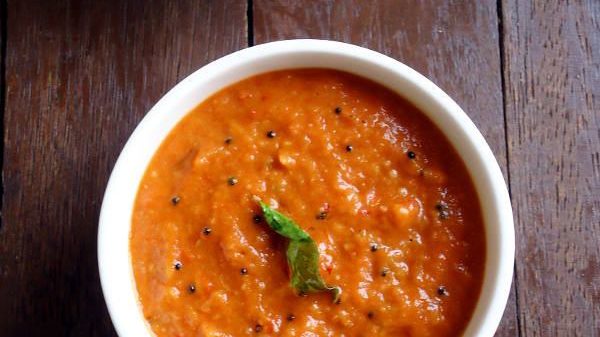
Ingredients:
- 2 medium-sized onions, roughly chopped
- 2 medium-sized tomatoes, roughly chopped
- 2-3 dried red chilies (adjust to taste)
- 1/2 teaspoon mustard seeds
- 1/2 teaspoon urad dal (split black gram)
- 1/2 teaspoon chana dal (split chickpeas)
- A pinch of asafoetida (hing)
- 1 tablespoon oil
- Salt to taste
- Water (as needed)
- Fresh coriander leaves, chopped (optional)
Instructions:
- Preparing the Chutney:
- In a pan, heat oil on medium heat. Add dried red chilies, mustard seeds, urad dal, and chana dal. Sauté until the dals turn golden brown and the chilies become fragrant.
- Add asafoetida and sauté for a few more seconds.
- Add roughly chopped onions and sauté until they turn translucent.
- Add roughly chopped tomatoes and cook until they become soft and mushy. This should take about 5-7 minutes.
- Allow the mixture to cool for a few minutes.
- Blending:
- Once cooled, transfer the mixture to a blender. Add salt to taste.
- Blend into a smooth chutney, adding a little water as needed to reach your desired consistency.
- Finishing Touch:
- Optionally, garnish with chopped fresh coriander leaves.
- Serving:
- Serve the onion tomato chutney as a side with dosas, idlis, vadas, or any Indian dish of your choice.
Enjoy your quick and tangy Onion Tomato Chutney! It adds a burst of flavor to your meal.
